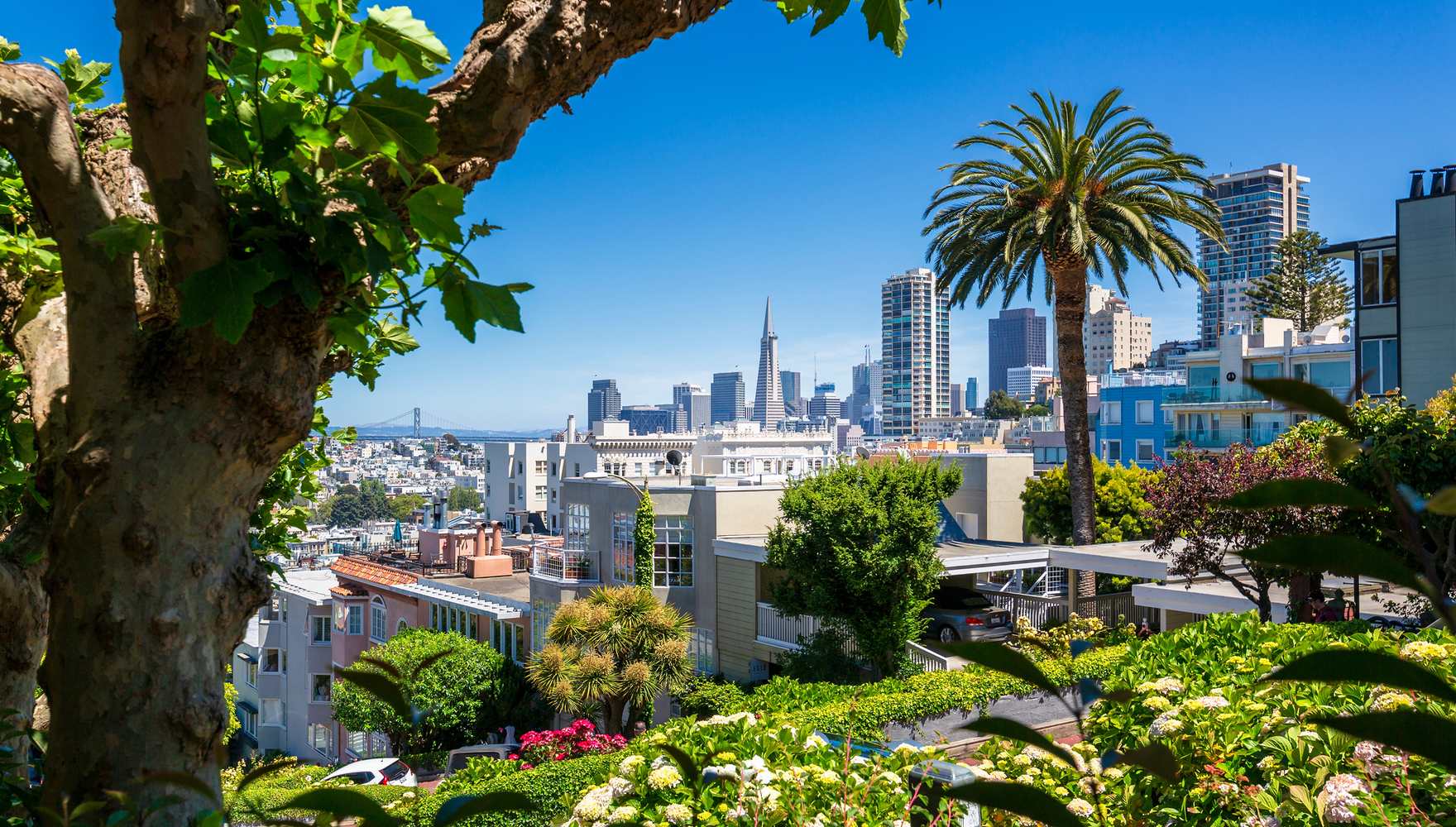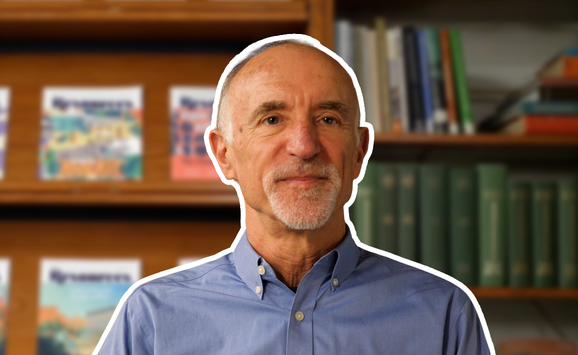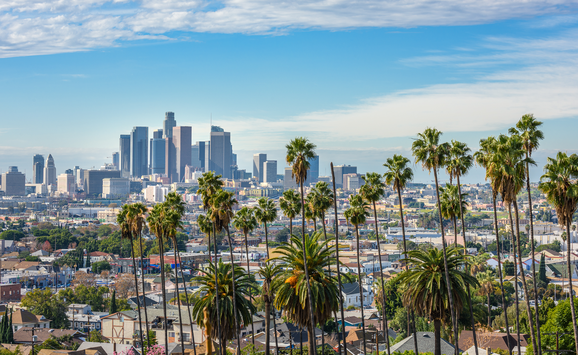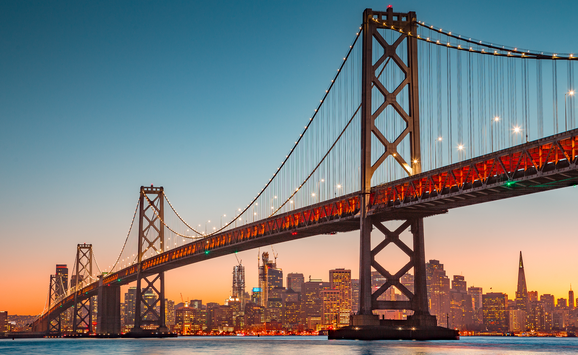In this week’s episode, host Daniel Raimi talks with Kate Gordon about California’s recent raft of climate policies. Gordon, the CEO of California Forward who also has held senior policy positions in California and the US Department of Energy, discusses the various Senate bills that have been proposed and passed recently in the state. She talks about the importance of considering energy affordability when addressing California’s energy and climate concerns and what she’s noticed as evolving perceptions of carbon management. Gordon also touches on specific bills that extend California’s cap-and-trade program and ramp up permissions for oil drilling, sharing her own take on the current state of climate policy in California.
Listen to the Podcast
Audio edited by Rosario Añon Suarez
Notable quotes:
- Certain policies that support renewable energy can lead to an increase in energy prices: “We had very aggressive policies, for years, in favor of customers putting rooftop solar on their homes—and we paid them back when they were overproducing from solar panels. Those customers were effectively taken off the whole grid, in terms of upkeep. So, you’re removing customers from the grid, which means there’s less load on the grid, and which means the people who are still on it have to pay more.” (6:10)
- Struggling oil refineries and lack of oil production in the state has led California to have an “islanded” gasoline market. With prices threatening to rise, California legislators signed Senate Bill 237, which promotes oil drilling in the state: “Right now, Californians use 100 percent of the gasoline we produce in state. We import everything else. So, about 40 percent of what we use comes from in state, about 60 percent from out of the country. If we continue to decline in state production, we have a trade-off. The trade-off is we’re importing more, and importing more puts more stress on our refineries … We have refiners going offline because people can’t afford to do refineries anymore. And we’ve regulated in Kern County, in particular, to say they can’t drill anymore. This is just the reality of the situation.” (20:52)
- The California governor vetoed Senate Bill 643, which proposed a carbon dioxide removal purchase program: “If we’re going to be serious about carbon removal in this country and the world, we have to create a market for it. Right now, through cap-and-trade programs here, in Europe, and in China, we have created a market for an avoided ton of emissions. We have told companies, if you do things more efficiently and don’t emit as much as you did last year, we will pay you for that, or you won’t be charged for that. That’s a market. There is no coherent market for a removed ton of carbon, which is actually, frankly, easier to measure and more clear.” (29:32)
Top of the Stack
- “California’s Innovative Vision for Climate Policy and Energy Affordability” by Dallas Burtraw
- Blog posts by Severin Borenstein through the Energy Institute at Haas
- The Age of Extraction: How Tech Platforms Conquered the Economy and Threaten Our Future Prosperity by Tim Wu
The Full Transcript
Daniel Raimi: Hello, and welcome to Resources Radio, a weekly podcast from Resources for the Future (RFF). I’m your host, Daniel Raimi. Today, we talk with Kate Gordon, the CEO of California Forward, who has also held senior policy positions in the US Department of Energy and the state of California.
As some of you might know, California recently adopted a wide array of new laws related to energy and climate change. In today’s episode, I’ll ask Kate to help us understand these new efforts to reduce energy prices and greenhouse gas emissions, while also supporting high-speed rail, carbon management, and more. We’ll also talk about the controversial new law that makes it easier to drill for oil in Kern County—the heart of California’s still substantial oil industry. Stay with us.
Kate Gordon from California Forward, welcome to Resources Radio.
Kate Gordon: Thanks so much, Daniel. It’s great to be here.
Daniel Raimi: I’m kind of amazed we’ve never had you on the show, Kate. You and I have known each other for many years, and we talk about things all the time.
Kate Gordon: Why haven’t you ever had me on the show before? That’s the question.
Daniel Raimi: That is the question, and I don’t have a good answer, but I’m glad you’re here now.
Kate Gordon: Happy to be here.
Daniel Raimi: So, Kate, we ask all of our guests when they join us for the first time to tell us about their path into the world of energy and environment. What drew you into this line of work?
Kate Gordon: Yeah, it’s a question that I get asked a lot. I’m a little unusual in this space, in that I really come to it personally much more from a place-based economic development perspective—and I don’t say that just because it’s my professional journey.
I grew up moving a lot. My parents were divorced and lived in different states, and I moved between the states a lot. I was half the time in Wisconsin, in Madison—on the industrial side of Madison, where the Oscar Mayer factory used to be—and then moved to Palo Alto for half the time and got a really early sense of the impact of industry on places.
So, the Oscar Mayer factory closed and everyone got laid off, and all the people I went to school with were affected by that. We, ourselves, were on public assistance for a while, and then moved to Palo Alto for half the time where it was the ‘80s–‘90s beginning of the kind of major upswing in income from tech.
I’ve been interested in the impact of industries on places for a long time, and energy is very much that, right? Energy is such a place-based set of industries and really affects places and people, and economies, and culture. So yeah, I come to it that way. Most people come in through a very environmental background, which I don’t. Actually, I’m very much an “energy as an industry” person.
Daniel Raimi: Yeah, super interesting. And that also connects with your climate-impacts work, right? Because the impacts on different places are so important when it comes to climate change, and so variable.
Kate Gordon: 100 percent. I mean, I think both extraction and climate impacts are so place based. Even though, I think, we often talk about climate change as this global goal (everyone goes to the UN [United Nations] to talk about climate), it really affects people very personally and very much at the community level in these economic and climate-impact ways. I think that’s kind of where the felt experience of climate change really is.
Daniel Raimi: Super interesting. Well, today we’re going to do a race through a variety of pieces of legislation that have passed in California this fall. But, before we get into the nitty-gritty of all the new legislation, let’s start with some background.
Most of our listeners will probably know that energy prices in California are higher than the national average—in some cases quite a bit higher. Can you help us understand why that is? And, in particular, some political leaders make the argument that California’s climate policies are a major driver of those high prices. Tell us about the high prices, and tell us about the role that climate policies might play in those high prices.
Kate Gordon: Yeah. Our prices are quite high, although (as I always feel one has to say) our bills are not necessarily higher—we have very good efficiency measures and building codes. Our electricity bills are often lower than other states, but the rates are higher, for sure. Actually, like most things in policy, it’s a mixed bag why that is.
One thing, I think, that doesn’t get enough attention—but is a big contributor to our higher prices—is actually maintenance and upkeep of the electricity grid. In California, that means (to a large extent) doing wildfire mitigation on the grid.
PG&E [Pacific Gas and Electric Company] has the biggest service territory in possibly the world, but certainly in the United State—and a huge amount of its major lines run through the Sierras. There’s a lot of fire risk; there’s also a lot of urban development that’s happened in high-fire-risk areas in the last 30 years.
So, PG&E is serving all those customers. They’re doing all the vegetation management, trimming trees, and dealing with fire mitigation—and that’s about 40 percent of the rate. That’s a lot; that’s a big chunk. So that’s not our climate policies, that’s actually the fact that PG&E utilities hold a lot of the risk of wildfire, because we hold them strictly liable when something happens on the grid. As a result, if there’s fires—like in 2018 or, potentially, the LA fires—that are related to transmission lines, then the utilities are held strictly liable for that.
It’s very expensive, so their insurance is really expensive, and their costs are really expensive for litigation. All that gets passed through, so all their efforts to reduce the risk gets passed through. Climate policy does have an effect, though, I will say.
A couple of other things that are slightly uncomfortable but true: About 18 percent of the bill is related to the fact that we had very aggressive policies, for years, in favor of customers putting rooftop solar on their homes—and we paid them back when they were overproducing from solar panels. Those customers were effectively taken off the whole grid, in terms of upkeep. So, you’re removing customers from the grid, which means there’s less load on the grid, and which means the people who are still on it have to pay more. That is a piece of the puzzle.
Our renewable portfolio standard is probably about 2 percent—it’s pretty small. I mean, it also has huge benefits in terms of cost, but having that requirement for utilities to switch aggressively to renewables does have a small impact. Although, if you look at a bunch of other states with really strong renewables growth, they actually have low prices. So these are complex interactions.
Daniel Raimi: Great. And gasoline prices in California are also quite a bit higher than the national average.
Kate Gordon: Yes. And just the shorthand on why that is: We have an “islanded” gasoline market. There are no pipelines going into California delivering gas from the United States, so we get our gas from California itself. We are a producer and, for imports, we’re a big refiner.
And our refineries are quite old. California is one of the earliest oil and gas-producing states, so our refineries are quite old, have maintenance issues, and get taken offline periodically. When that happens, prices go up—it is a whole thing. And, actually, refiners have started to shut down permanently and leave the state in reaction to the maintenance and upkeep not being worth it, given the regulatory environment, and a number of other things in the state. We have a very interesting debate going on about gasoline, which I’m sure we’ll get into.
One of the things that’s happening is a whole conversation about whether to reverse the direction of the major line that leaves the state with gasoline and have gas coming into the state from the continental United States—which, again, we don’t currently have. So, interesting. Gasoline is a fascinating conversation in California, and doesn’t get a lot of attention, actually. The gasoline market gets attention for oil and gas company behavior, but not a lot of people actually have the fundamental understanding of the system, the way they do with electricity.
Daniel Raimi: Right. Yeah, folks should read Severin Borenstein’s blogs.
Kate Gordon: 100 percent.
Daniel Raimi: They’re about the California gasoline market on the Energy Institute Blog at Haas.
Kate Gordon: And, actually, on the grid too. He has done some great writing on these cost questions around utility bills, as well.
Daniel Raimi: Yeahh. Okay. We’re going to talk about specific bills in a moment, but before we get into the details again, I’d like to ask you (just like big picture): How well do you think this most recent package of laws is going to address these affordability issues while also addressing other state priorities like emissions mitigation and technological innovation? So, big picture, What do you think of the whole shebang?
Kate Gordon: Yeah, the big picture somewhat addresses affordability. There are some important things that happened. One of the bills that happened, I think it’s SB 254 (and SB stands for Senate Bill). In California, for whatever reason, all our bills are talked about by number. They don’t have names, which is very confusing, so I apologize in advance.
But SB 254, Senate Bill 254, is interesting because it included—oh, actually this wasn’t the one. It included a lot of reforms to the grid, including recapitalizing the wildfire fund for utilities—and that’s important. Utilities pay into this wildfire fund. It helps to deal with some of the—what we just talked about—costs from utilities when they are not negligent, but a fire happens because a tree blows down and hits a wire or something.
This fund is really important to them to help offset their costs. That actually matters a lot (as I just said) to costs, because the bill has a big chunk that’s about wildfire mitigation, so anything that is investing in resilience or wildfire costs actually does help.
There’s another bill (I cannot remember the number) that finally—this is a debate we’ve been having forever in California—moves us toward a more regional grid with other Western states that actually will help with long-term affordability, because it’ll allow for more supply coming in and more balance of supply. So, that’s good. California has a lot of land use constraints in building a lot more renewables, so having other states with more land available as part of our market is good. So those are important.
There’s a big chunk of how we pay for programs to help low-income consumers and advance these goals, in California. A big chunk of that comes out of the—and I know we’ll talk about this—budget that’s created by our cap-and-trade system. And that system got extended, so that’s good. Although I do think a big issue in general with California climate policy (and I’ve written about this and others have) is when we talk about affordability, we tend to talk about costs. We tend to talk about very short-term cost implications, and the big-picture things that are underlying these affordability challenges, we are not investing in holistically. There’s not a holistic approach to bringing down costs and risk of wildfire through things like land use, change, and deep investments into resilience programs. We tend to focus on damage control from events and these short-term cost measures. We do need to start taking a look at these bigger-picture things. Again, the NEM (or the net energy metering) system for rooftop solar consumers, we need to do something about that.
It’s not helpful to affordability to get people off of paying for the grid, because it just means fewer people are paying more of the cost, and that just means cost goes up. You see this with data centers, too. If we get a bunch of new load, everyone’s paying for it. Is that really fair? Some states have thought about taking that off the load for ratepayers. We need to actually address (A) climate risk in a serious way, and those costs. And (B) who is paying the cost of maintaining the grid and having that be more fair. And those two things weren’t really addressed by these bills.
Daniel Raimi: Right. Really interesting. You mentioned the cap-and-trade program, so I’d love to talk more about that. I believe (and I’m pulling from my colleague Dallas Burtraw’s recent blog post on this topic), but I believe the two bills that primarily addressed the cap-and-trade program were Assembly Bill 1207 and Senate Bill 840, which extended the cap-and-trade program through 2045 and tweaked how the revenues from the cap-and-trade program could be used, and probably some other things too. Talk us through the changes to the cap-and-trade program, and tell us what the highlights are from your perspective.
Kate Gordon: Absolutely, and one thing to know for those not in California, is that an interesting feature of our system is that we don’t go through reconciliation. So you have this Assembly Bill and the Senate Bill that do fundamentally the same thing, but they’re two separate bills. The thing that happens in California is that they get reconciled fundamentally through the governor signing them and then implementation, but they don’t have to be reconciled before that—which, I think, is it.
Daniel Raimi: That seems very strange, but I’m not going to go down that rabbit hole right now.
Kate Gordon: There are so many things. Also, every individual lawmaker gets to author a million bills, and the governor has 3,000 bills to go through. It’s a fascinating system—I will just put that to the side.
So yes, the original cap-and-trade system—which was created as part of this big set of climate bills that are the fundamental bills in California—were all signed under Governor Schwarzenegger, actually, in 2006; cap and trade was created then. It has been extended before, but it was just extended through 2030, so it was going to end in 2030.
There was a lot of discussion starting about extending it and having a very thoughtful conversation about making it a stronger program. There’s been good and challenging things about it through the years. And then the president directly attacked this program in an executive order and Governor Newsom, partly in response to that, sped up the whole process. This didn’t have to happen this year, because it wasn’t going to expire until 2030, but a lot of people thought it was important that it did. What it did was help make the markets more confident that there will be a trading system through 2045. So, that’s good. I mean, long-term certainty was kind of … I think the reaction, frankly, to the executive order was a reason to speed it up, but also long-term certainty was important; it reaffirmed some of the big goals. It does a couple things that are important.
One of the important things it does is the idea of … The issue of offsets has been really controversial in California and everywhere. And offsets are where, essentially, you can keep emitting, but you can buy credits—carbon removal, in some form or another, or somebody else’s emissions reductions—to offset your own emissions production. And that ceiling got raised, actually, from 4 percent to 6 percent, but it also got put (what’s called) under the cap, which is something Washington State has done. And we really took a lesson from Washington to say, we’re not going to give companies 100 percent allowances to do emissions, and then an additional amount for offsets—we put it under the cap. Now they have to do a 94 percent reduction, and then they can use a 6 percent offset. So, that’s important, Super technical but important.
The bill does focus a lot on the uses of the revenue. That revenue’s really important. Just to confuse everyone even further, the budget that is created by the cap-and-trade revenue is called, and has been for a long time, the Greenhouse Gas Reduction Fund. So, same name as the federal program—different thing. But that revenue is a separate budget from the general fund. It’s totally separate because of complicated tax rules in California. So, that revenue is really important. It’s where California pays for all the things. It’s clean vehicle credits for EVs, it’s support to consumers around air-quality stuff, and all the truck rules on zero emissions, it’s all coming out of that program.
The legislature has been frustrated for quite a while. It feels like the governor’s office just decides where all that money is going to go through the California Air Resources Board, which runs this whole program. So, the legislature put its thumb on the scale a bit in these bills on where the money should go. And there’s a lot to say about that, but some important things are, one, that wildfire prevention is still in there. That’s important; that was put into the budget after the 2018 fires. As I just said, it is quite important to affordability, so it’s still in there.
There is a carve-out of a billion dollars a year for high-speed rail for the next 20 years that happened, which is super controversial but really necessary to make that happen. And high-speed rail is fundamentally one of the biggest investments in transportation, emissions reduction in the state, and a bunch of other things happen through that. So there’s a lot and it’s very technical, but those are some important things.
Daniel Raimi: Great. One of the other bills that caught my eye—in particular, because I think a lot about oil production—was Senate Bill 237, which has gotten a lot of criticism from the environmental movement. Some are calling it a giveaway to the oil and gas industry, but it’s a bill that has to do with oil production in Kern County, which is by far and away the state’s leading oil producer. Tell us what was SB 237, and what’s your view on it?
Kate Gordon: Yeah, again, context for nonCalifornians, because this is confusing—I think, when you don’t live here, California is a very unusual oil-producing state. Because although we are an oil producer, it is not one of the industries that the state holds up as essential to the economy. So it’s a little bit odd, because in most oil-producing states, everyone is involved with the oil industry in some way, culturally or economically. Think Texas, think Alaska, and New Mexico with gas. We are an oil-producing state where oil is this very contested thing, and there’s a very powerful set of people in California that want to end the industry completely. So, that’s just important context, because it’s been a political football for a long time. But we are an oil-producing state, and we’re also a giant state where individual regions are huge. I always think of it as, if California were the nation, then Kern County is the Texas of California. It’s where all the oil production happens, and it’s where a lot of agriculture happens, too. It’s where Bakersfield is for those listening, if you know Bakersfield.
Daniel Raimi: Yeah. I was just looking it up, and Kern County is 25 percent larger than the state of Connecticut. So, it’s big.
Kate Gordon: Yeah, it’s big. The regions of California are giant. So yes, it’s important context. Kern County is very dependent—and Daniel, you’ve done some of, I think, the best work on this space. But how local economies depend on fossil extraction, it’s quite dependent on its tax receipts on fossil extraction.
What happened this year is (I kind of talked about this earlier)there was a really important memo from the vice chair of our California Energy Commission, Siva Gunda, who wrote a memo to the governor that’s gotten a lot of attention, and that laid out the issues around the California gasoline market and how islanded the state is, how the economics work, what the issues are with our existing refineries and our north to south pipeline, and aging and maintenance issues. And essentially said, look, here are the choices we’re making. This is a set of trade-offs.
Right now, Californians use 100 percent of the gasoline we produce in state. We import everything else. So, about 40 percent of what we use comes from in state, about 60 percent from out of the country. If we continue to decline in state production, we have a trade-off. The trade-off is we’re importing more, and importing more puts more stress on our refineries—because what we generally refine is crude oil coming in from outside, and our refineries are hitting this moment of just aging and needing to be maintained. We have refiners going offline because people can’t afford to do refineries anymore. And we’ve regulated in Kern County, in particular, to say they can’t drill anymore. This is just the reality of the situation.
This is super controversial—a lot of people have written a lot of things about this, the oil companies have said this, and people just don’t listen to them here.He now said this, and people did listen. He said, “There is a risk of major increases in gasoline costs because of this islanded situation,” because we don’t really have the ability to store more imports coming in through the ports. The ports aren’t really ready to have a lot more imports. There’s the infrastructure that would need to be built up if we’re going to switch to all imports—we’re not reducing our demand for transportation fuel all that quickly. We’re still using a lot of this stuff, and it’s got to come from here, and it’s got to come from elsewhere. It was just a balancing act. And what the legislature said to the governor, ultimately based partly on the memo, was “This is a really hard thing to do, but we’re going to have to drill more and deal with these refineries in order to have prices not go through the roof.”
That’s what happened. And the governor, I think, saw that this moment of affordability was so dire. I mean, nobody really knows how to deal with the increase in infrastructure that would need to happen if we imported a lot more gas. So, that’s what happened. It was unbelievably controversial, but also, I think, a really interesting political moment. It’s a very good example of how affordability overcame power from the environmental movement in California this year.
Daniel Raimi: Yeah, for sure. I mean, you should feel free to not answer this question if you don’t want to, but, had you been advising the governor, do you think you would’ve made the same trade-off? Would you have encouraged him to go ahead and support this bill?
Kate Gordon: I’m happy to answer it. I ran the Governor’s Office of Planning and Research in his first term, and was his senior advisor on climate. I will just say that this issue around the refineries and the islanded market is not news. We knew this was coming, and I personally was advising various people that we needed to deal with this earlier. So I’m not happy it became a crisis, but that’s when political things tend to happen.
I think I probably would’ve advised him to sign it. I mean, there’s a lot of debate. The oil industry had come out with some studies—and not just the industry, not paid lobbyists, but some serious energy economists had come out with some studies saying, “Look, we are looking at a potential of $8 to $10 a gallon for gas in California if we don’t,” because there’s going to be a gap between our infrastructure giving us the ability to just replace every gallon with an imported gallon.
You can’t just do that. That requires storage, infrastructure, port maintenance, and all kinds of things. And there’s going to be a gap, and it’s going to raise prices a lot because we don’t have cheap oil coming in from other parts of the United States. And that was very controversial. People have debated that number. I’ve done a lot of reading of a lot of the underlying studies, and I think that number is not crazy. And if I’m the governor, and I’m looking at $8 to $10 a gallon gasoline, yeah, I think you’ve got to do something about that.
I do also think, though, Daniel, that I would’ve advised combining—and I did advise combining—that with an energy transition strategy that’s comprehensive. The state has got to be doing this kind of thing, which is going to be unpopular, include trade-offs, and be hard, combined with a look in the long term. This is where we’re going to get.
We’re going to get to a place where the state’s not producing anymore. Supplies are going down, and producing is more expensive, for all the reasons. It’s not where we want to meet our climate goals. We want to lead on the oil transition. Here’s how we lead on the oil transition. Here’s what that looks like in Kern County. Here’s what that looks like in the refinery communities. Here’s how we’re leaning in and supporting refinery transition—create an office of energy transition at the state. There’s things we could do to be leaning in on the proactive transition side, and I think that the state hasn’t done that. I am one of a number of people arguing very strongly that the next governor needs to do that.
Daniel Raimi: Yeah. Well, I could talk about oil all day, but I’m going to ask you about one more topic, which is carbon management. I know this is something that you were super interested in. Several bills were related to carbon management that passed this year in California. I’m curious if you can maybe pick out one or two pieces of those laws that you find particularly interesting or important, and tell us a little bit about it.
Kate Gordon: Yeah, carbon management is really important. Again, a controversial topic, obviously. It’s funny, I’ve been teaching a class on climate politics and infrastructure and finance. First, I taught it at Stanford at the law school and business school for about six years, and now I teach it at Berkeley at Business and [Public] Policy, and I do a class on carbon management and geoengineering every year.
It’s just fascinating that, over the eight years, that has gone from students thinking it’s insane, and they would never support either of those things, to students understanding that it’s necessary to meet any of our climate goals, to actually remove carbon from the atmosphere, and trying to figure out how to do it. So, just anecdotal, but it’s interesting to me how much it’s changed. I think everyone recognizes at this point that the cumulative amount of greenhouse gases in the atmosphere from the industrial era is huge.
We are not bringing it down fast enough. We have impacts happening today because of that cumulative set of gases, and we have to do something to get them out. Carbon removal is a very interesting way—actual carbon removal, not just carbon capture and sequestration where you’re producing and then you’re sequestering what you produce, but actually net removal—is super, super important.
Again, when I was in the government, we started talking about this. This has been on the minds of people in California for quite a long time. It is extremely controversial because a number of people still think that it’s like a moral hazard, a get-out-of-jail-free card for oil producers. I say all that to say this has also been a long-standing conversation in California. It’s interesting that we had some progress on it this year, but then some backsliding. I think it’s interesting.
So, Senate Bill 614, the governor did sign, and that actually lifts the existing moratorium on the interstate CO₂ [carbon dioxide] pipelines. That’s interesting, because we need to build pipelines in order to do carbon removal. This wasn’t couched this way, but it sort of is part of an energy-transition strategy.
Lawrence Livermore Lab has done great work on this. The places in California that have the best geologic formations to store carbon are the same places that produce oil. So, Kern County is a great place to store carbon long term, and this allows for pipelines to move CO₂ to places that have good carbon-storage potential. That’s interesting. Californians really don’t like pipelines, and so I thought that was fascinating that he signed this.
Another way you could do this would be to support facilities that are next to geologic places to store carbon and not do pipelines. That was interesting to me. I was like, “Pipelines? That’s surprising.” Just because there are more terms listed does not mean that they do not have to go through all the permitting and siting that they have to go through.
So that’s hard, but interesting. What also is interesting to me, and I think really disappointing, is that the governor vetoed senate Bill 643, which was a CO₂ removal purchase program. Look, if we’re going to be serious about carbon removal in this country and the world, we have to create a market for it. Right now, through cap-and-trade programs here, in Europe, and in China, we have created a market for an avoided ton of emissions. We have told companies, if you do things more efficiently and don’t emit as much as you did last year, we will pay you for that, or you won’t be charged for that. That’s a market. There is no coherent market for a removed ton of carbon, which is actually, frankly, easier to measure and more clear. We don’t have a market for it. We have offset programs that can pay people sometimes for doing some kinds of removal.
We have some amount of support for it through tax credits federally, although those have been very up and down. We have some amount of support through the California low-carbon fuel standard. There’s a voluntary market that the company Stripe created, but there’s not an equivalent for every ton of carbon, which can be on a regulated market and traded.
What this bill said was, let’s create a purchase program. Let’s actually do a forward-looking purchase program for the state to invest in carbon removal projects and essentially value those projects. And the governor vetoed it, which I thought was very surprising. Because it would have been helpful to a set of really important economic actors in California. Agriculture, forestry, oil and gas companies, and people doing engineering, carbon engineering, and a bunch of start-ups that do carbon removal would’ve been helped by it.
The tech companies, which are super important in California, all have these net-zero goals where they’re required internally and voluntarily to buy carbon removal credits, and it would’ve helped them. But the governor said it was duplicative, which was very odd to me. He said it was duplicative of the cap-and-trade bills, which is odd, because you’re basically saying, “We’re not removing carbon because we’re avoiding carbon.” And those are just two different things.
Daniel Raimi: Yeah, super interesting. Well, Kate, this has been a fascinating conversation. As we often do in these episodes, you are really just scratching the surface on a whole bunch of topics, but I think this has been a great primer to what’s been going on in California over the last six months or so.
I’d love to ask you now to recommend something to our audience that you think is great. It could be something that you’ve recently watched, read, or heard. It could be related to the environment, or not so related to the environment—we’re pretty loosey-goosey. What would you recommend? What’s at the top of your literal or your metaphorical reading stack?
Kate Gordon: That is a great question. I actually really avoid reading things that are about the environment and climate, because it’s just so overwhelming. Because I work on it all day long, I find that I gravitate toward really different kinds of things. I will recommend a book that just came out, which is about another thing that I’m obsessed with and which has relationships to climate, but is slightly different policy area—which is monopolization and wealth consolidation.
Tim Wu, who is a great writer on these subjects, just came out with a book called The Age of Extraction—which is actually not about oil extraction, but is about tech platforms, the consolidation of wealth by tech, and what that’s doing to the economy. I highly recommend it; a great book that just came out.
He just did a Commonwealth Club interview that I went to yesterday, so I really recommend that. I think people need to be thinking about monopolization. It’s an issue in the utility sector, and it’s an issue in the energy sector. In the tech sector, it’s a huge issue—and tech has driven a lot of the net-zero goal setting and internal carbon price stuff, so I think it’s worth reading.
Daniel Raimi: Fascinating. That looks great. Well, Kate Gordon from California Forward, one more time, thank you so much for joining us on Resources Radio. We really appreciate it.
Kate Gordon: Thanks so much, Daniel. It was fun.
Daniel Raimi: You’ve been listening to Resources Radio, a podcast from Resources for the Future, or RFF. If you have a minute, we’d really appreciate you leaving us a rating or a comment on your podcast platform of choice. Also, feel free to send us your suggestions for future episodes.
This podcast is made possible with the generous financial support of our listeners. You can help us continue producing these kinds of discussions on the topics that you care about by making a donation to Resources for the Future online at rff.org/donate.
RFF is an independent, nonprofit research institution in Washington, DC. Our mission is to improve environmental, energy, and natural resource decisions through impartial economic research and policy engagement. The views expressed on this podcast are solely those of the podcast guests and may differ from those of RFF experts, its officers, or its directors. RFF does not take positions on specific legislative proposals.
Resources Radio is produced by Elizabeth Wason with music by me, Daniel Raimi. Join us next week for another episode.









